Conversations about Climate Change
This week, a crash course in climate change: we meet one strange fish already feeling the pinch, ask if humans are wired to ignore the threat, and look at one way we could all reduce our carbon footprint. Plus, why alcohol consumption can come back to bite you, the seven new planets discovered by NASA and the bees that have been trained to score goals.
In this episode

00:49 - Alcohol intake linked with aging arteries
Alcohol intake linked with aging arteries
with Darragh O’Neil, UCL
Just over a year ago, the UK government reduced the guideline amount of alcohol that’s considered safe from 21 units per week to 14. But the recently published Health Survey for England shows that the average weekly intake for men is about 15 units and for women it’s about 9. In other words a lot of people are drinking a lot more heavily than perhaps they ought to. But is there evidence that this actually does any damage? And can a young person get away with it, as long as they cut down later in life? A lot of the data we have at the moment is from a single snapshot of people’s lives, so may not be giving the whole story. Darragh O’Neil, from UCL, has looked at the drinking habits of a large number of people over several decades, and how this has ultimately affected their blood vessels and he spoke to Chris Smith about the research.
Darragh - Arterial stiffness is an indicator of cardiovascular disease risk and research has, traditionally, relied on cross-sectional research which is just looking at acute alcohol consumption. But by looking at intake longitudinally, we are deepening the understanding of the way in which alcohol intake over time is related to the stiffening of arteries.
Chris - I suppose that following people up over a period of time also captures how people’s drinking behaviour changes because, as people age, they’re likely to drink different amounts and this is likely, in turn, to have a different effect rather than just looking once?
Darragh - Correct, yes. And people’s health changes over time and that can actually influence their drinking behaviours. There’s a concept known as the “sick quitter” hypothesis, which is people stop drinking as a consequence of the onset of poor health and it’s something that, potentially, explains research findings show that former drinkers maybe are at a greater risk of poor health than maybe to people who drink moderately over time.
Chris - People talk about a J shaped curve, don’t they. where along the X axis on the graph is the amount of alcohol that people drink, and then on the Y axis is their risk of having a problem
Darragh - Yes, exactly.
Chris - And people who drink no alcohol, or report drinking no alcohol, appear to have a higher health risk profile than someone who actually drinks quite a lot? So you’re saying that it could be that within those numbers could well be sick quitters who have given up drinking but they have already done damage therefore they appear to be unhealthy and not drinking?
Darragh - Exactly. Yeah that’s correct.
Chris - So how did you do the study and who did you look at?
Darragh - This study is based on a cohort study, which is based on a longitudinal study of UK civil servants. These participants were recruited originally in around 1985; there was just 10,000 of them back then. They took part in repeated assessments of lifestyle behaviours, underwent medical screenings, provided alcohol intake data from the very beginning.
More recently, these individuals also took part in what are known as pulse wave velocity assessment which measure the stiffness of their arteries. We used their longitudinal alcohol intake data to look at its relationship to that stiffening and to how that stiffening subsequently develops over time.
Chris - Before you tell us what happened with the stiff arteries, do you believe these people? The reason for my scepticism is that one of the first things I was always taught at medical school you take anything anyone tells you and double it, whether it’s cigarettes or booze. So this is self-reported alcohol consumption, isn’t it, so actually their intake could have been dramatically different to reality?
Darragh - That’s correct. There’s always that possibility and we do acknowledge that in the study. But previously analysis with this data have shown that there is a consistency between the reporting at the time point that they provided us, so what they provided us in the past with retrospective accounts. So it seems to suggest that there is some validity to what they’re providing us.
Chris - And you’re able to capture with this the history of how much alcohol and when they consumed it what their arteries look like today, effectively?
Darragh - Correct, yeah.
Chris - What does it show?
Darragh - What we found is that those that have consistently drank above 14 units of alcohol a week, those individuals have significantly greater stiffness in their arteries at the beginning of early old age compared to those who consistently drank within the low risk limits, or below that threshold of 14 units a week. And we also found that those that stopped drinking over time showed an increased acceleration in their arteries stiffness during a subsequent interval of four to five years.
Chris - Do you think they are the sick quitters?
Darragh - That is a possibility. We haven’t been able to identify for sure but we have seen that there is some change in their self-reported health over time those that do desist from drinking. But I think there’s further analysis to be performed there to clarify that and to answer that with certainty.
Chris - The ones who were the consistently heavy drinks, this does appear then to have translated into an effectively premature ageing effect in their blood vessels?
Darragh - That’s correct, yes. That’s how we’ve interpreted it.
Chris - Based on what you’ve found then, what are your conclusions? What do you think this tells us about the way in which we use and abuse alcohol?
Darragh - It suggests that by ignoring the health guidelines in terms of low risk drinking behaviors, people are putting themselves, potentially, at an increased risk of cardiovascular ageing over time and that there is a benefit to people to adhere to those safe drinking guidelines and to not consume in excess of 14 units a week.

06:28 - Seven new planets discovered
Seven new planets discovered
with Amaury Triaud, Institute of Astronomy, Cambridge University
NASA announced the exciting discovery of seven brand new planets this week, in a solar system 39 light-years away. The planets orbit an ultracool dwarf star about the size of Jupiter, called TRAPPIST-1, and some of them are likely to contain liquid water, so could this mean they also host life? Georgia Mills spoke to one of the scientists who was part of the international team of astronomers to make the discovery: Amaury Triaud from Cambridge University’s Institute of Astronomy, and he explained how they found these new planets.
Amaury - We just wait for the planet to pass in front of the star. As it does so it casts a shadow and from how deep the shadow is, then we know that there is a planet and we also measure the size, and how frequently the shadow comes back we measure the orbital period of the planet.
Georgia - So you had your sights on this star and you just waited to see if planets passed in front of it?
Amaury - Pretty much, yeah. We had a survey, so we looked at different stars and on that one planets past.
Georgia - What do we know about them?
Amaury - What we know is their size and the masses, so we know they have sizes very similar to the Earth and masses similar to the Earth. Once you have radius and mass you know the composition and density and that is consistent, at the moment, with rocks which allows us to tell that they are Earth-like essentially.
Georgia - Oh wow! And what about things like their orbit time and say you and I were sitting on one of these planets, what would it look like, what would it be like?
Amaury - Well, the sight would be remarkable. The planets are really close to one another and really close to the star. The star being small to get good temperature all the planets are really compact. Say you were on TRAPPIST-1F, for instance, the star would be three and a quarter times larger in size, but in area, it would look ten times bigger than the Sun. Humans are very good at noticing area rather than size itself. The nearest other planet (TRAPPIST-1G) would be in the order of twice the size of the Moon but it would not always be there. Only when the planets are in conjunction, so once per orbit essentially, every nine or ten days or so, you would see this in the sky, which is another planet.
Georgia - Considering how close they are to their star, do we think they might be able to host life?
Amaury - The star is small; it’s quite cool compared to the Sun and so the energy the planets receive is similar to what the Earth receives. We’re actually quite excited. There is a lot of potential that if the atmospheric and geological conditions at the the surface of the planet are good and if there is water then this could exist at the liquid form which is essential for life.
Georgia - Why is this thought that there might be liquid water there?
Amaury - We don’t know yet if there is liquid water. We actually say that all seven planets are temperate, meaning that under specific conditions they could host liquid water. For three of them I think the chances are much higher. But you could imagine that for the furthest planet out, which is quite cold, if you have a lot of greenhouse gas it would trap the heat and allow liquid water to persist. So what’s great is we now have seven targets that we can check.
Georgia - How do we check them?
Amaury - Using the same method as we did to detect them. The planet passes in front of the star, some of the starlight shines through the planet’s atmosphere and we notice a signal. That minute signal is what we will investigate now.
Georgia - Say, for example, there was alien life it would be very exciting, but what if it was like bacteria or these very small things. How would we know just from their imprint over the sun?
Amaury - Here we rely on what we know on life on Earth. Life on Earth has changed our atmosphere dramatically meaning that if similar amounts of life is over there, and changes in a similar amount of the atmosphere then we would notice that but it requires several ingredients. Life needs to be present and change things significantly.
Georgia - These planets, I think they’re 39 light years away. That’s quite far so we’ll probably never get there, so what’s the point of actually studying them?
Amaury - We only have one example for biology at the moment in the solar system so we want to go beyond a sample of just one. The key question here for an astronomer is not
is there life elsewhere? We think there must be somewhere but how frequently does it happen? If you have the right conditions is it every planet, every planet in ten, every one in ten thousand? That, I think, is a key question in understanding our position within the many outcomes of nature.
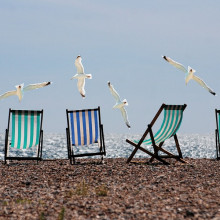
11:23 - Mythconception: what causes the seasons?
Mythconception: what causes the seasons?
with Tim Revell
Tim Revell has been celebrating the seasons in this week’s mythconception…
As we begin to emerge from winter in the northern hemisphere and the southern hemisphere slides towards autumn, it's high time to debunk a common seasonal mythconception…
Which is that, because the Earth is tilted, when the northern hemisphere leans toward the sun it's a little bit closer to our heat source and so the northern hemisphere experiences summer. Meanwhile, the southern hemisphere is leaning away, so is a little bit farther off, and so it experiences winter. As the distance changes, so do the seasons.
The myth sounds good, intuitive even, but it's totally wrong! And here’s why.
The Earth's orbit around the sun is not a circle, it's actually a squashed circle known as an ellipse. This means that, at certain times of the year, our planet is quite a bit closer to the Sun than at others. In January for example, the Earth is 5 million kilometres closer to the Sun than in July.
Now this does cause some slight temperature differences, but it doesn’t produce the seasons. In fact, the northern hemisphere experiences summer when the Earth is farthest from the Sun.
So what about the tilt? Well Earth's tilt is about 23.5 degrees from the vertical and always points roughly in the direction of the North Star.
In July this means that the northern hemisphere points towards the sun, and the southern hemisphere points away. Six months later, when Earth has travelled to the other side of the Sun, the roles are reversed, with the northern hemisphere tilting away and the southern hemisphere tilting towards the sun.
The seasonal tilt makes a part of Earth only a teeny weeny bit closer to the sun compared to the millions of kilometres away we are from it. So it’s not the change in distance that causes the season, but it is the angle.
During summer, sunlight consistently hits that patch of the Earth at a more direct angle, and for longer, meaning that extra heat energy is transferred to the surface, warming things up more.
So as the northern hemisphere points towards the sun, sunlight hits it a more direct angle, and the days are longer, which all adds up to more heat arriving and warmer weather. Meanwhile the southern hemisphere points away, getting sunlight at a less direct angle over a shorter day, and so it experiences winter.
Interestingly over very long periods of time, Earth's tilt changes, moving between 21.4 degrees and 24.4 degrees. This means we're actually wobbling back and forth as we move through space, but this wobble is so slow that it takes 41,000 years to complete. This is far too gradual to affect the seasons in the short term, but over long time scales we think it plays a role in the formation of ice ages.
Currently we're slowly wobbling towards the upright position. This means that very, very gradually, the seasons will become a little less extreme. But this is over such a long period of time that the wobble is not going to have a noticeable effect on our climate over the next 100 years or so. There are plenty of other factors that will dominate those particular changes.
We're also not the only planet that has seasons. Uranus lies almost completely on its side, tilting at an angle of 97 degrees and so experiences extreme seasons. Whereas Venus has hardly any tilt at all so experiences very little in the way of seasonal differences.
Why on Earth the Earth actually tilts at all, we're not quite sure. It's thought that probably early on in its history the planet was hit by something sufficiently large to knock us slightly off kilter. It’s not a bad theory: Earth certainly took a lot of hits early on; in fact one of the collisions was so large that a left-over lump became the moon! But that’s another story…
Seasons really are nothing to do with our distance away from the sun, what really matters is the angle at which the sunlight hits us. If you’re heading to the beach to top up your tan, you better hope that your part of the planet is tilting towards the sun, for an awesome angular hit of sunbeams.
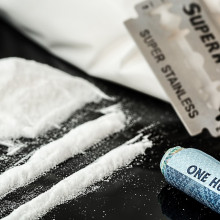
14:58 - Cocaine addiction leads to iron build up in the brain
Cocaine addiction leads to iron build up in the brain
with Karen Ersche, University of Cambridge
Cocaine used to be the drug of the rich and famous, but over recent years it has become cheaper and more readily available, and as a result more and more people are becoming addicted to this highly dangerous substance. A report last year from the UK Government Advisory Council found that 1 in 10 people between the ages of 16 and 59 had used the drug at some point. The current treatment for cocaine addicts is through therapy, but relapse rates remain high. Now a new study has linked cocaine addiction with a build up of iron in certain parts of the brain, and particularly areas known to control our inhibitions, although the team don’t yet know what the iron is doing there. Tom Crawford spoke with lead author Dr Karen Ersche...
Karen - We found, for the first time, that people with cocaine addiction have disruptions in their regulation of iron and we find that they have reduced iron levels in the blood, and increased levels of iron in the brain.
Tom - What did you do in this study to find these results?
Karen - We asked all our participants to have a brain scan. We used a very specific scanner and with this estimate how much iron in the brain, and we also took blood samples and did the standard test.
Tom - An accumulation of excessive iron is actually very bad as it’s highly toxic and can lead to cell death. Similar examples can be seen in other brain degenerative diseases such as Parkinson’s and dementia. But in terms of cocaine addiction, the iron doesn’t appear everywhere.
Karen - The increase in iron was very specific in the brain. It was selective in the globus pallidus, which is a nucleus deep down in the brain and it’s involved in inhibition. We know that people with cocaine addiction have problems with inhibition. The globus pallidus is also involved in avoidance learning, which we know that people with cocaine addiction have problems avoiding adversity. So it is tempting to speculate that we have found here an angle which might be related to problems that we see in the clinic.
Tom - Now that you’ve discovered this link between build up of iron in the brain and lower levels of iron in the blood, and this link to cocaine addiction, could this lead to new treatments, new preventative measures? What are the possibilities here with this discovery?
Karen - First of all we need to address two critical questions. We need to find out what is causing this, so how is cocaine disrupting iron regulation and their different possibilities. One would be chronic cocaine users are vulnerable to infection and inflammation and this could disrupt iron homeostasis.
On the other hand we also know that cocaine users have quite an appetite for fat and fatty food which could hamper the absorption of iron. Another possibility would be that cocaine destroys or weakens the blood/brain barrier so that more iron leaks into the brain.
We also need to find out what this build up of iron is actually doing in the brain that’s associated with the severity of the addiction. So we found a relationship with the amount of iron accumulated and the duration of cocaine use.
Tom - So, I guess, to come up with new possible treatment methods by understanding more about the effect that cocaine has on the brain, this hopefully will lead to potential new avenues of treatment is possibly one of your future goals?
Karen - Yes, that’s right. And I think there’s quite a lot of literature out there on the changes that we see in the brain, but we know very little about the mechanism of how these changes come about. What is the role of cocaine and how does cocaine interact with brain cells? If cocaine interferes with iron regulation, iron metabolism, that would be really a new avenue to provide treatment.
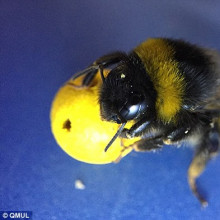
19:03 - Bees trained to score goals!
Bees trained to score goals!
with Clint Perry, Queen Mary, University of London
You may have heard of five a side, but what about hive-a-side? Using a sugar-water treat, scientists have discovered that they can train bees to kick a ball about! Ricky Nathvani spoke with Clint Perry to find out why…
Clint - One of the biggest findings is that bees were able to learn this very unnatural task. Normally bees, in nature, they move into flowers. They don’t really manipulate them to any complex degree, they just push forward into flowers to find the nectar or the pollen. Here we train them to actually roll a ball into a specific region to gain a reward - access to sugar water.
They were able to learn this socially. In the first experiment we used a plastic dummy bee to push the ball into the centre and have the bees watch and observe this demonstration. They were able to pick it up - all of the bees trained were able to pick this up. So we were then interested in what about this social learning was important for them?
So in a second experiment we trained them in a variety of manners. One they observed a live bee demonstrating how to roll the ball in the home to gain reward and in another situation we used a magnet underneath the platform to move the ball, so they didn’t see anyone or anything moving the ball, just the ball moving itself.
The bees who saw the live demonstration solved the task much more quickly than bees who saw just the magnet moved ball, but just the ball moving on it’s own was enough for the bees to learn.
Ricky - But actually, they pick up on that a lot faster if they see another bee doing that. Is that correct?
Clint - That’s right. And this was the purpose of the second experiment. Bees didn’t simply copy what they saw but they actually improved upon what they observed and the strategy that they saw.
So in experiment two, the live demonstrators always moved the furthest ball from the centre into the centre. They had three possibilities: one that was seven centimetres away, one that was five and one that was two, and the live demonstrators always moved the furthest ball. That’s what the observers saw each time during the training sessions, but during the tests, the observers moved the closest ball into the centre and, therefore, improved upon the strategy that they saw and didn’t simply copy what they observed.
Ricky - Wow! That’s really quite un-bee-leivable… sorry that was terrible. What I was going to say is it is quite impressive, all jokes aside, that you guys didn’t demonstrate this to the bees at all. They kind of naturally worked out that they could move one of the closer balls in and have a much more efficient solution to this problem.
Clint - Right. And an important point to that is that we ran controls to make sure they weren't using simpler mechanisms. One being just knowing that they weren’t paying attention to the position of the ball, they moved the closest ball into the centre. But also we changed the colour of the closest ball to black instead of yellow, which is what they saw during the training sessions and they still moved that black ball (the closest ball) in the vast majority of tests.
Ricky - And this is the first time that that kind of behaviour has been studied extensively?
Clint - Yes, as far as we know yes.
Ricky - So bees naturally, compared to loads of other animals that we’ve observed, have tiny brains. Would you necessarily expect bees to be capable of this kind of thing and what’s the significance of studying this kind of behaviour in bees, as opposed to larger animals?
Clint - Most of us, when we see bees or insects of any type, we look at those as genetically preprogrammed, unthinking machines and, often times as pests and what not, but there’s no real behaviour that’s been shown to require a large brain. Decades of research has shown that bees and other insects can learn, can solve complex tasks and can navigate complex environments.
I guess what’s important to note is why we’re studying this in insects? It’s the combination of bees having cognitive abilities as well as very small brains in order to access and to study. So we can record from and study individual neurons within the bee brain and, at the same time, looking at the entire brain. Whereas for larger animals, there are just so many neurons and so much stuff there that it’s hard to get at with the tools we have available today.
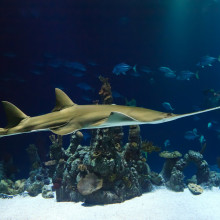
24:42 - Sawfish finding themselves in hot water
Sawfish finding themselves in hot water
with Karissa Lear and Adrian Gleiss, from Murdoch University
Sawfish are strange rays, which look like flat sharks with long chainsaws for noses. These oddities live in the ocean, but one species spends its youth in Australian rivers. As temperatures are on the up, the water they have to live in is already getting hotter, so how are they coping? Adrian Glise and Karissa Lear from Murdoch University have been probing the survival prospects of these fish, as Chris Smith found out.
Adrian - What we’re trying to understand really is how changes in climate in the region and changes in land use practice through agriculture, how that’s going to affect essentially the quality of the habitat for them, so they’re a critically endangered animal. Fitzroy is probably one of the last important nurseries for them the species, so really trying to figure out what threats they’re facing and how we can change our behaviour as humans to safeguard their habitats is really what we’re after.
Chris - How are you doing that?
Karissa - We’re using accelerometers, which is the same technology as in your smartphone or fitbit to measure the movement and activity patterns of these fish. So in correlation to temperature to see if they become more active or less active if the temperature rises or falls.
Chris - Obviously sharks don’t have smartphones, so how are you doing that?
Karissa - The accelerometers we use, we can either attach them externally to the dorsal fin of the fish or we can surgically implant them into their body cavity. The accelerometers we use also measure temperature. That’s another factor so same tags.
Chris - How do you get the tags on these things?
Adrian - There’s two ways really. We have two types of tags that we’re using. One tag will stay on the animal for a very long time and will transmit it’s data so what we do with those is we implant them into the animal itself. We do that because it doesn’t cause any drag and it can stay in the animal for a very long time. The other tag we’re using is an external data logger. We put that on the animal, we drill a little hole through the fin and attach it to the fin and then when we catch an animal again we can basically retrieve that unit and download the data.
Chris - You said “catch an animal.” Are you having to catch these things - how big are they?
Karissa - The ones in the river can get up to about two and a half metres.
Chris - How do you catch one of those?
Karissa - We mostly use gill nets. The sawfish with teeth all the wary down the rostra, they get caught pretty easily just with their nose in the gill net. We can pull them up to the boat and onto shore.
Chris - So what do you do you travel up to the Kinderly, you go and find a promising looking bend in the river where you think these things hang out and just put nets in there?
Karissa - Yes. Essentially.
Chris - How many of you are there to pull in a fish that’s two and a half metres and have got very short bill teeth - how do you do that?
Karissa - We usually have about three of us on the boat.
Adrian - We also have a lot of help from indigenous ranger groups up there, so that local knowledge for us is very important. The guys take us to the places where their grandparents and they’ve caught these animals for a long time. So we’re not going completely blind but, at the same time, they’re very remote places. It basically involves us flying to Derby first and then at Derby we get into our four wheel drive. We put a boat on the roof and then it’s 150 kilometres into the bush essentially. Without some of that knowledge of the locals really I think we’d have a pretty hard time finding them in the first place.
Chris - Talking of what you’re finding, have you got data yet?
Karissa - We have; we’ve just started to get data back.
Chris - What’s the trend that’s emerging? What are you seeing?
Karissa - A lot of the fish look like they’re doing a diurnal pattern with temperature. During the day they’ll rest in very cool places so that their energy expenditure is low and then during the night when it’s colder outside, they can hunt in the warmer water, which increases their muscle activities, so they can actually hunt more easily in warmer water.
Chris - And if one extrapolates that to what we think is happening with climate change and things like that Adrian, is this data promising? Does this suggest that this is quite a tolerant species or not?
Adrian - Well, actually, that’s a really interesting question. Last year we have a very, very poor wet season which means we had very little water (09.35) . We actually saw very, very high temperatures last year. So the activity, or the potential for activity increases over temperature gradually, but then it usually gets to a certain point in temperature on which it declines rapidly and we’re just starting to see that tipping point in some of that data. So I think that the (09.58) in a sense that they can quite happily sit in water at 33 degrees celsius but, I don’t think there’s much wiggle room above that really. And I think what we’re going to start to see is we’ll start to see us going over those tipping points more often in the future.
Chris - Do we not think though Karissa that the animals could just move because if that becomes an inhospitable, impropitious place for them to hand out, presumably they’ll be other places potentially down the coast a bit that might be a little bit cooler where they can still survive?
Karissa - That might be a good option for pelagic species in the ocean that have a lot of different spaces that they can move into but these river systems, there’s only a couple of rivers in northern Australia and these animals need to use that habitat for their nursery. So they don’t really have a choice where to live in those first few years of their life.
Chris - So they are pretty tied to the environment?
Adrian - Yeah. I mean at the end of the day - it’s where your mum drops you off isn’t it? If you rmum drops you off in the mouth of this particular river you’re going to swim up that stream of fresh water. And also, don’t forget, especially those estuarine areas where they’re born there are a lot of saltwater crocodiles in there and all you really want to do as a tiny little sawfish, and you get born around 70cms, you try and get into the fresh, you try and get into the shallow areas. Because, I think, in the estuary you’re not going to have a particularly good time so I think you’re very tied to where you’re born.
Chris - What do you think the long term prospect is then?
Adrian - It’s tough to say. I think as it gets hotter the animals are definitely going to struggle more, but I think what’s going to be very important is that we maintain a lot of water in the river. Because as long as there’s a lot of water and we have those really deep holes in the river and those essentially offer cool water refuges, and I think they’re going to become more and more important as the environment get’s hotter and hotter. And as long as that’s the case I think they’ll probably be OK.
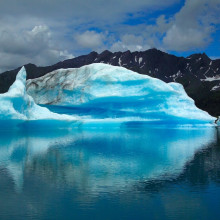
31:09 - Climate change: have we tipped the balance?
Climate change: have we tipped the balance?
with James Dyke, Southampton University
The concept of a ‘tipping point’ is something that is mentioned often with regards to climate change - the idea that after a certain point there’s NO going back, and things are only going to keep getting worse. Kat Arney spoke to James Dyke from Southampton University to discuss what this might mean for us as humans...
James - First off it’s important to point out, or at least remember that the Earth’s climate has always changed. If you go back far enough into Earth’s history we’ll see massive changes, so perhaps the biggest changes that we would observe over the 10,000 year timescales would be the ice ages. About 10 to 100,000 years ago, the Earth was about five degrees cooler than it is, sea levels were about 120 metres lower, and much of Northern Europe and Northern America were under hundreds of metres of ice.
Since the last ice age, the Earth’s system has been slowly warming up and sea levels have been increasing. But what we’ve witnessed over the last couple of hundred years has been really quite unprecedented rates of change of surface temperatures and other indicators that there is a significant warming pulse happening largely as a consequence of human emissions of greenhouse gases.
Kat - What do we mean by this concept of the tipping point? What does it look like and what are we tipping towards?
James - Many people think that climate change is a progressive and gradual thing. If it takes hundreds or thousands of years for the Earth’s climate to reach a new equilibrium, then we may think that the climate and the Earth’s system will respond smoothly and linearly. So if look at something like sea level rise, we’re looking currently about 3mm a year, which doesn’t seem very much but, unfortunately, the Earth’s system seems to be full of these tipping elements.
So when people talk about tipping elements or tipping points in the Earth’s climate, they're often referring to what’s proved to be a very influential study in the Proceedings of the National Academy of Sciences back in 2008, where they identified nine elements of the Earth’s system. So things like the Arctic sea ice or the Greenland ice sheet, the Boreal forests or the Amazon forests or some large functioning of oceanic currents.
What they’re worried about now, and what we’re increasingly worried about is that you can drive the Earth’s systems so much and these systems respond sort of sluggishly, but then you go beyond a point and they suddenly flip. They may flip into positive feedback states where once they begin to change it will be effectively impossible for those things to be arrested.
Kat - So I guess it’s a bit like you imagine all water just trickling slowly out of a bucket that’s tilting but then, at some point, it’s just going to overbalance and the whole lot comes out?
James - Yeah. You’ve got this metaphor that you’re rolling a great big boulder up to the top of the hill and it takes an awful lot of energy to get there. When it’s right at the top it might be precariously balanced and a slight nudge is just enough to push it down to the other side, and as soon as it starts rolling, it’s going to have tremendous amounts of momentum and you’re not going to be able to stop it. So when you’re thinking about the collapse of the Antarctic ice sheet, it looks as if certain regions of western Antarctica are melting, they’re falling off into the ocean. Once that process begins, it’s practically impossible for it to stop.
Kat - Is this really a point of no return? Are there things that we can get back? We can’t rebuild icebergs but is there anything we can slow, or stop, or reverse?
James - There are some wacky ideas at the moment about putting in machines up in the Arctic to try and refreeze the Arctic. These things will cost hundreds and hundreds of billions of dollars and they most probably won’t work, and we most probably won’t be able to deploy them in time. It sounds obvious, but the best thing that we can do to avoid these tipping points, or at least to reduce some of their impacts, is to significantly reduce our forcing on the Earth’s climate, which means making significant reductions in greenhouse gas emissions.
Kat - If we don’t, if the worst happens. If we hit these tipping points and all this climate change massively accelerates, release of carbon dioxide into the atmosphere massively accelerates, temperature goes up. What is going to happen and on what kind of timescale? Are we going to wake up in ten years time and it’s just an apocalypse out there?
James - Wherever we do end up, we want to be hopeful that we go there very slowly. Because, if the Earth’s climate changes slowly, then humans will be able to adapt but then also other species too. So you may be able to find species that will be able to go up higher mountains or find climate refugia.
The worry about tipping points is that then can engender very rapid change. At the moment, when you look at the current predictions of the total amount of warming that we seem to be locked into, it seems to be at least about three degrees celsius. We can visualise impacts in terms of the Earth’s climate through things that we care about, so our ability to get access to water, the impact on ecosystems, our ability to grow food, coastal communities, impacts on human health. And as they increase beyond the already established one degrees celsius of warming, those things increase in terms of impacts.
If we really do end up going beyond three degrees celsius, we’re currently going beyond three degrees and maybe even five degrees within a couple of hundred years, many people would argue that that is a recipe for the collapse of human civilisation as we know it.
Kat - So very, very briefly, we’ve got a few seconds left. There are some people who go “la la la, I can’t hear you, the Earth has always changed, the climates always changed. This is all just basically made up by the Chinese,” mentioning no names. If you had a sentence to say to them to make them realise that this is a big problem, what would you say?
James - Climate change is happening right now. If you’re in Australia in Sydney you would have been experiencing 47 degrees celsius of temperatures over the last week. You can’t live your life like that and that’s important. That’s an omen of future changes that are happening. Just off the eastern coast of Australia you have the ongoing collapse of one of the World’s marvellous natural resources, The Great Barrier Reef, because of high temperatures. So climate change is happening right now and it’s going to be impacting much much more over the following years.
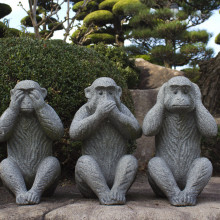
37:45 - Are we wired to ignore climate change?
Are we wired to ignore climate change?
with George Marshall, founder of climate outreach
While 98% of scientists are agreed on the problems facing us due to climate change, why are we - as a species - so bad at doing stuff about it? It’s a complex issue, but could it be partly down to the way we’ve evolved? That’s what George Marshall argues in his book ‘Don’t even think about it: Why our brains are wired to ignore climate change’’, as he explains to Georgia Mills...
George - Climate change is a really tricky challenge for us because the rational side of our brains can appreciate it for being a major threat. Anybody that looks in any detail at this, especially the underlying science, comes away very concerned but it’s hard to hold onto that concern because, unfortunately, it doesn’t really seem to have many of the qualities that trigger that visceral, emotional sense of concern. It’s distant, it’s dispersed, it’s quite difficult to get your head around. It doesn’t make a kind of intuitive sense really that we’re putting invisible gases out into the atmosphere which change the weather. We don’t have any real precedent for this or things to draw on.
These are all the qualities which make us concerned about things is that they’re issues that are here, that are now, that we’ve seen before. And really, the quality that alerts us most to things that we should worry about is that there’s an enemy that wants to cause us harm. That’s why we respond so strongly to issues like terrorism and the problems of climate change fits very badly with that as well. We get very upset and angry about unfairness where people want to cause harm, where people want to cause violence. Climate change will be violent in terms of its impacts, but nobody at any point in this actually wants to cause harm.
So what I’d say of it is it’s almost perfectly constructed to bypass all of the systems we depend upon to tell us that something is dangerous. That’s why you get into this very tricky situation where people rationally accept it’s a problem, but emotionally don’t.
Georgia - What is it about our biology or the way or brains are built that makes us ignore it in this way?
George - One of the arguments out there, as I said, is that it doesn’t seem to fit very well with what we have been historically adapted to deal with. But, underlying that is is the fact that we have been adapted to not be too worried about things. People who are constantly anxious, and are constantly being triggered by concern perform less well. So, therefore, what we have in our brains is a very interesting balance between the capacity to be worried about things, and become engaged, and take action, but also the capacity to ignore things and not take action and it’s those two qualities.
The problem of climate change is that it works quite well to the capacity to push things on one side. We tend not to think about things that are somewhat in the future because, who knows, situations might change. We tend to prioritise things in the present, for example. These are all very very deeply embedded, long term, evolutionary behaviours which are sensible. They’re part and parcel of our survival.
Georgia - How do you tackle this when no-one wants to hear about it, no-one wants to address it, we’re just built that way? What do we do?
George - The really simple, in a nutshell answer is we give it a social shape and form. What makes all of a difference for whether people accept or deny climate change is whether it speaks to their culture, their values, and their identity. It’s not impossible. There are very large numbers of people who are deeply concerned about climate change and some of those people vote on their principles, some of them even get arrested, they demonstrate. There were 400,000 people on the streets of New York protesting about it. It’s not impossible, but the reason they could do that is because it had come to be built around a set of narratives and values that spoke to them and who they are. Similarly, very, very intelligent, well educated people will deny the existence of climate change because that denial narrative speaks very well to who they are.
Really, the way we bypass this is we make it social. Climate change is something that people like us believe in whoever we are. This is a faith issue, this is a muslim issue, this is a conservative issue, this is a business issue, this is an artist’s issue. And then it becomes persuasive because we start hearing of it from people like ourselves, and if there’s one thing that galvanises us into action it’s the fact that we think that something is part and parcel of the identity of a group around us.
Georgia - How does that happen? Is that the responsibility of people in those parts of society to persuade everyone else in their group?
George - I think it has to happen, as it were, proactively and reactively. Proactively I think that governments, organisations, scientists who wish to galvanise action on this enable people to have that conversation and they help to give climate change a shape that can be passed on in that way. I think networks that have different identities and different ways of reaching people proactively engage with it.
I was hugely excited, of course, by what Pope Francis did where he started a conversation within the catholic church based around catholic social teaching around climate change. I’d like to see that happen within every faith group or, indeed, any group where people have a set of shared values.
But I also think as individuals, as anyone listening who is concerned about climate change, you have to recognise that there is a social silence around this issue whereby people actively suppress conversation about it. And I think we need to recognise there’s an enormous amount of power and importance in the conversations you have with the people around you.
Georgia - What way is it best to bring it up because, when you see an article, all you hear is someone constantly bringing up climate change? You can, even if you completely agree, a part of you is saying “oh no, not again, here they go again.” What kind of message should you be giving out to people when you are trying to change their minds?
George - I think it’s like any kind of conversation. Imagine a situation where people are very passionate about a lifestyle issue like, for example, their diet. If you just lecture people about it and say “oh no, you really shouldn’t be doing that. That’s very, very bad.” You push people away and you're just generally irritating. I think the important thing to do is just to hold something as a core value that you bring up where it’s appropriate and you share it where you can.
I think certainly it’s important we talk about climate change around extreme weather events. I think talking about it in the workplace saying are we as a company, are we as an organisation thinking about this? Are we prepared for this? The most important conversations, of course, are not just the ones we have with each other but the one’s where politicians ask us what we think. That is really, really important. If you have an opportunity to engage with key decision makers - absolutely put it on the table.
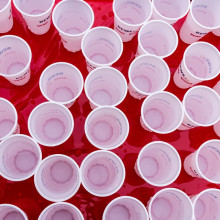
44:56 - Cup-Club: Reducing our waste
Cup-Club: Reducing our waste
with Safia Qureshi, founder and CEO of cup club
Being concerned about climate change and doing something about it is not just for hippies! It’s for all of us, and more and more people are starting to make changes on a personal and societal level. One person who decided to take matters into their own hands joins us now, it’s Safia Qureshi founder and CEO of something called Cup-Club, which aims to reduce the waste from single use take away coffee cups. She spoke to Kat Arney about the amount of waste created from single-use cups.
Safia - In the UK we found coffee cups are one in five of the most polluting items in our city. I know that sounds completely bonkers and it’s very difficult to visualise it. But if you think of what we did with plastic bags and how much of a crazy endemic plastic bags were, paper cups are also a very close second. We found in the UK we consume 2.5 billion paper cups a year.
Kat - But they’re paper. Surely paper is like biodegradable. It’s recyclable - right?
Safia - No! None of that, no. Paper cups are not a mono-material. Now any materials scientist will tell you that putting together more than one material makes it a very complex product to then deal with later on in the waste streams. The word paper cups is very misleading because naturally paper is not resilient to water or moisture. I think if it was a true paper cup it would fall apart in you hand and you’d probably scorch it.
The internal lining of most paper cups is a material called polyethylene and it counts to between 2-5 percent of the entire material product so it is, essentially, two products that are bound together.
Kat - And you can’t get them apart and you can’t recycle them. So what is cup club? How have you tried to solve this problem of the paper cup?
Safia - What we developed is a cup which is, essentially, a solid cup. You buy your coffee in the same way that you always do but we developed a return point. So instead of throwing it in a bin, you return it at a drop point that we develop and design.
Kat - And then do you get any money back? What do you do if you give your cup back and don’t just bin it pile them all up at home like my reusable bags?
Safia - Exactly. You give a deposit that gets returned to you. You get incentives, so we’re developing all kinds of incentives.
Kat - Like if you return ten cups you can get a free coffee or something?
Safia - Or reduced coffee. That’s something we’re negotiating with retailers, yes. There’s definitely a reward that we need to give users for doing the right thing.
Kat - This is my own personal reusable cup; it’s a lovely shade of grey and green I got from the Roslin Institute in Edinburgh. So I take this around with me and make my own coffee. But the idea is that you get your cup, clean, new with your coffee or cleaned with your coffee and then you return it and get the deposit back? So it’s not like this is something that you take home and own?
Safia - Exactly. You do not keep that cup - that’s a one time model.
Kat - How do you think this is actually going to work? Have people said they’ll get on board with this sort of scheme?
Safia - We’ve trialled it with our first education partner in the university at the Royal College of Art and we did extremely well. We initiated it through the students first because, again, they are generation Y, they’re born into a time of crisis, very passionate about getting involved in sustainable products…
Kat - … and drink a lot of coffee?
Safia - And drink a lot of coffee to do all of that work. We had a huge amount of success and now we’re rolling that out to further universities this year. So yes, you’ll see a lot of change.
Kat - Brilliant! If you can get this kind of scheme to work. So if you can significantly reduce paper cup consumption, what are we talking about in terms of carbon dioxide saved?
Safia - Consuming energy into a product that is reused many, many times is a lot more efficient than making products that consume energy and is only used the one time. So by increasing the reusability and the way that you optimise a product means that you’re using less energy over its life cycle, which immediately has a massive CO2 output reduction.
We’ve calculated from a manufacturing perspective and understood that 15 paper cups in terms of plastic is the same as one of our cups. So we calculated our product is reused up to 1,000 times, and we do a little bit of simple maths, we realise that we actually reduce CO2 by half a kg just by transitioning ourselves to a reusable cup. So simply by calculating on a per cup use, we were able to calculate, year on year, what our CO2 reduction savings would be, which starts to go into the thousands of tons. So it ends up, just in manufacturing terms, 18,000 tons.
So by reducing something on a simple daily basis, and we’re not asking people to really go about changing the way that they drink coffee even, it’s genuinely just instead of finding a bin you just find a collection point.
Kat - What about other things? I go into a high street chain, I buy a salad and I’ve got my little plastic knife and fork, I’ve got the box that it comes in. Could you do the same thing with all these kind of things?
Safia - You could - absolutely. What I’d like see is that this actually triggers a whole movement of returnable food boxes, returnable or refillable bottles, so we don’t see all kinds of plastic packaging on…
Kat - Egg boxes. I remember going down the shop with my egg box.
Safia - We could do egg boxes - there you go. Kat - that’s a startup idea.
Kat - Right - that’s mine if anyone’s listening. Well, I think that’s wonderful. What is your future vision for this kind of idea and technology?
Safia - My future vision is zero waste. My future vision is enjoying your every day and being able to do something good without it costing you too much. And, like a lot of the talks we heard today about climate change, it can be really heavy and it can be quite daunting. What we wanted to do was develop a product that would align with people’s values. Something really as simple as making a decision - do I want it in a more sustainable product than what I currently have? Giving people options.

51:24 - QotW - How quickly does my tea become pee?
QotW - How quickly does my tea become pee?
Ricky Nathvani put this question to David Wheeler from University College London.
David - When we drink a cup of tea, the components of the tea will be absorbed from the intestines into the body. So, for example, the water from the tea will be absorbed, the proteins and fats from the milk will be absorbed and the sugar, if we added it to the tea, will be absorbed. These different components are then distributed to different parts of the body and the bloodstream.
Ricky - OK. So the tea gets out of our digestive tract through the intestines and into the bloodstream, but how does the tea actually become pee?
David - The fluid is critical, obviously, for normal health and the fluid balance in the body is tightly regulated by the kidneys. So if when Steven drank the cup of tea he didn’t really need the extra fluid, then the kidneys could get rid of that fluid fairly quickly. We could think of this as a bathtub full of water with an overflow. If we add another jug of water to the bath, then some of the water in the bath will go down the overflow pipe. Now this may not be not be the same water that we’ve just added in, but it will be from the same pool of water that we’ve just added the jug to.
Ricky - Aha. So if your blood is like a bathtub with a capacity for carrying a certain amount of water, then adding in too much will cause it to spill over when it’s in the kidneys and make urine. Although it’s difficult to say how much of that came from the new water, or the water that was already there before you drank your tea, some parts of your tea could leave your body within thirty minutes. Thanks for clearing that up for us David. And with all this talk of peeing - I think I have to go.
But before I do, a sneak peek at our question for next week when we try to shine the light on this question from Phillip:
Phillip - My home in Cambridge has about 60 percent compact fluorescent light bulbs and the rest are LEDs. Should I be chucking out the former, even though they still work, on the grounds that they use lots of power compared with LEDs or should I just wait until they break over time and only replace them with LEDs then?
Related Content
- Previous How Does My Tea Become Pee?
- Next Can we create artificial rain?









Comments
Add a comment